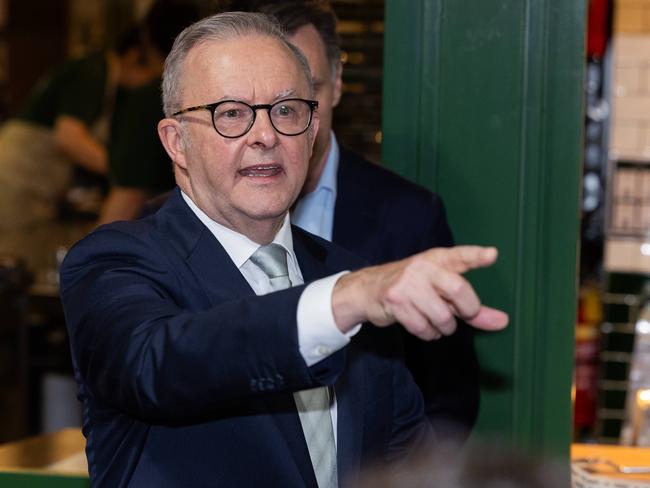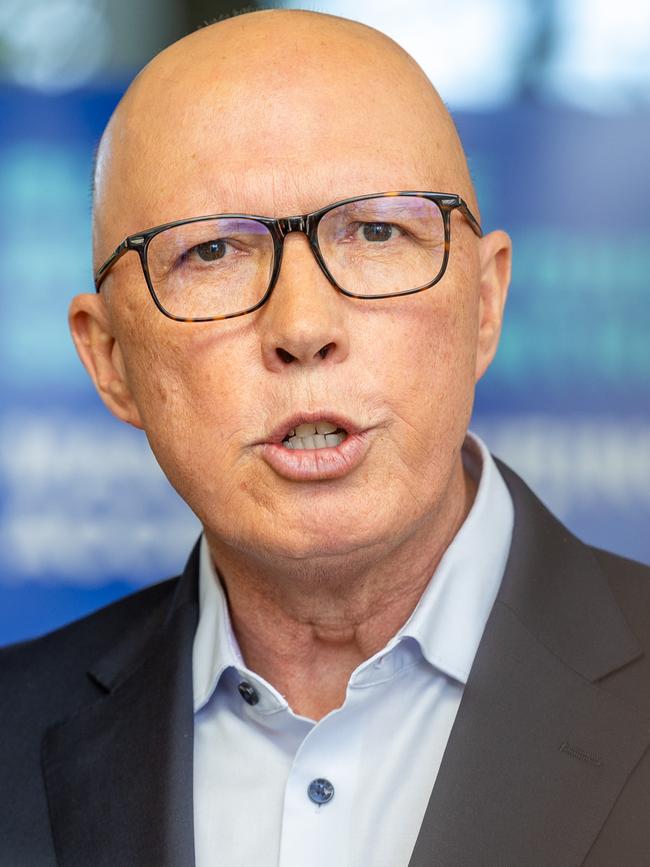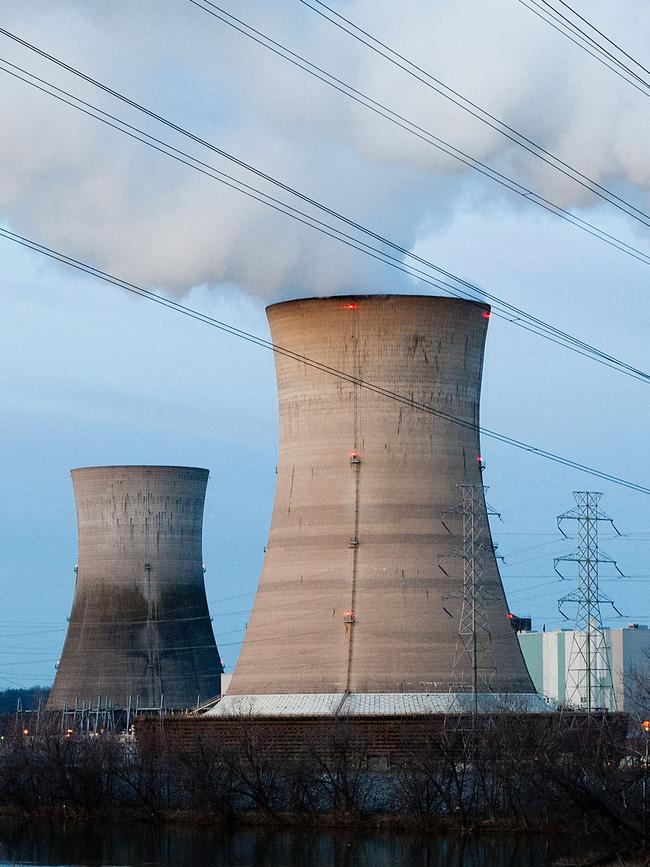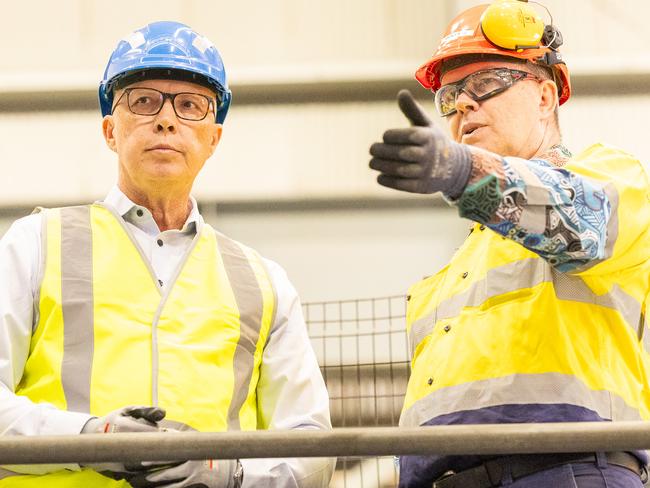Six election campaign myths Anthony Albanese and Peter Dutton are telling voters
Green hydrogen doesn’t work, Albanese is spending more than Whitlam, and investors hate nuclear — we break down the spin to bring you the facts.
Federal Election
Don't miss out on the headlines from Federal Election. Followed categories will be added to My News.
With two leaders’ debates done and dusted, there are plenty of scare campaigns and counter campaigns being thrown around as we hit the halfway point of the election.
Labor has brought back its trusty ‘Mediscare campaign’ while the Coalition has been attacking the government’s economic records. We break down the spin and bring you the facts.
Liberal claim: Labor’s Green Hydrogen doesn’t work
True or False: FALSE … but it’s complicated
In September, Chris Bowen said Australia would be the green hydrogen capital of the world but seven months on, private sector confidence in the revolution is dwindling.
Major projects like Origin Energy’s hydrogen hub in the Hunter Valley of NSW and billionaire Twiggy Forrest — one of the biggest global backers of green hydrogen — halted his projects.
That’s not to say that green hydrogen doesn’t work, the more accurate statement would be to say it could work but not for some time given delays in these major projects.
Grattan Institute energy program director Tony Wood said the concerns over green hydrogen were commercial not technical.
“Hydrogen is proven to be much more expensive than people had hoped and the demand for green hydrogen is not yet there,” he said.
“That’s why these projects have at lease been postponed.”

Labor claim: Private investors won’t back nuclear power
True or false: FALSE
Investors and industry experts have previously said they will not invest in nuclear energy unless there are subsidies to cover the substantial costs of nuclear power.
But it’s also worth noting that the government subsidises renewables including Fringe Benefits Tax exemptions to boost the take-up of electric vehicles, subsidies for rooftop solar and an election pledge to subsidise the purchase of home batteries.
On an industry level, Energy Minister Chris Bowen has the Capacity Investment Scheme which the Commonwealth uses to underwrite new renewable projects and remove some of the risk of investing in renewables.
There is also the issue of a national ban on nuclear energy in Australia which would need to be revoked to give investors more certainty.


It would be more accurate to say that the current settings do not support private sector investment in nuclear energy but with subsidies like renewables and a removal of the ban, there could be more investment like there has been overseas.
“For investors, the confidence provided by clear, long-term governmental commitment to a nuclear power program remains critical,” the World Nuclear Association says.
Mr Wood agreed, saying while it was true that there was no desire for private sector investment in nuclear right now, “given the right market conditions of course private companies would invest in it.”
“They haven’t tried (to get investment), they have assumed they wouldn’t and there is no reason they wouldn’t in the future.”

Liberal claim: Biggest spending government since Whitlam
True or false: FALSE
The Liberals have accused Labor of being the highest spending government since Gough Whitlam.
Labor has hit back saying the Morrison government spent more in Covid.
Economist Saul Eslake said it would be more accurate to say “Labor is the highest spending government since the Hawke government” if you disregard the unprecedented Covid circumstances.
Mr Eslake said federal government expenditure in 2020-2021 was 31.4 per cent of GDP, and 27.7 in 2019-2020 which included a quarter of the pandemic in it.
This year’s forecasted government spend in 27.0
The last time it was so high barring Covid was in 1984-1985 when it was 27.5 per cent.
Under Gough Whitlam it was 21.7 per cent in 1974-75.
“I wouldn’t blame the Morrison government … there were unusual circumstances as there were if you were to go back to the Second World War,” Mr Eslake said.

Labor claim: Peter Dutton tried to end bulk-billing
True or false: FALSE
In 2014, as Health Minister Peter Dutton announced a plan to charge patients a co-payment $7 for a GP visit.
The co-payment was pitched as a way of making bulk-billing more sustainable.
As of 2025, the average out-of-pocket cost to see a GP is $43.38 nationally according to Cleanbill — up 4.1 per cent since the previous year.
So if Labor claims a $7 co-payment would have abolished bulk-billing then they will have to accept criticism of soaring out-of-pocket costs under their leadership also.
To their credit, Labor had tripled the bulk-billing incentive for kids, pensioners and concession-card holders and have promised a $8.5bn bulk-billing boom.
The Coalition has matched this commitment.

Liberal claim: Gas plan will bring savings by his calendar year
True or False: FALSE
Mr Dutton has repeatedly claimed Australian businesses and households will see savings from his gas plan on their power bills by “this calendar year”.
However this contradicts what his energy and climate change spokesman Ted O’Brien said on radio.
“We should be seeing after 12 months of operation an impact on bills, whether that be the households, whether that be industry,” he said.
The Frontier Economics modelling produced for the Coalition also undermines Mr Dutton’s claim, warning households and industrial users can experience a “lag” in the benefits of more gas in the system flowing through to their bills.
Labor claim: Dutton will cut Medicare to fund nuclear reactors
True or False: FALSE … based on current facts
Another plank of Labor’s Mediscare campaign has been telling voters that Peter Dutton will fund his nuclear reactors by cutting funding to Medicare.
In an interview on ABC Insiders in February, Mr Dutton flagged cutting wasteful spending in government but said where the cuts would come from would be decided once they were in government.
On April 2, Mr Dutton again flagged cutting wasteful spending including in the health and education departments but said the cuts would not come from any area delivering frontline services — such as Medicare.
The Coalition has also matched Labor’s $8.5bn investment in bulk-billing and $573m for women’s health.
Whether the Coalition’s wasteful spending cuts focused on bureaucrats have a flow on impact on Medicare service delivery is unclear at this stage.
More Coverage
Originally published as Six election campaign myths Anthony Albanese and Peter Dutton are telling voters





